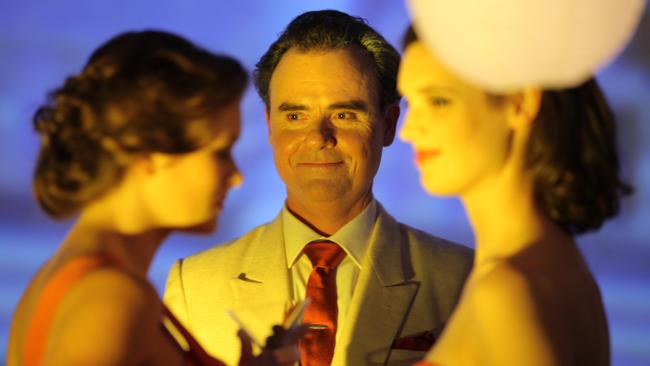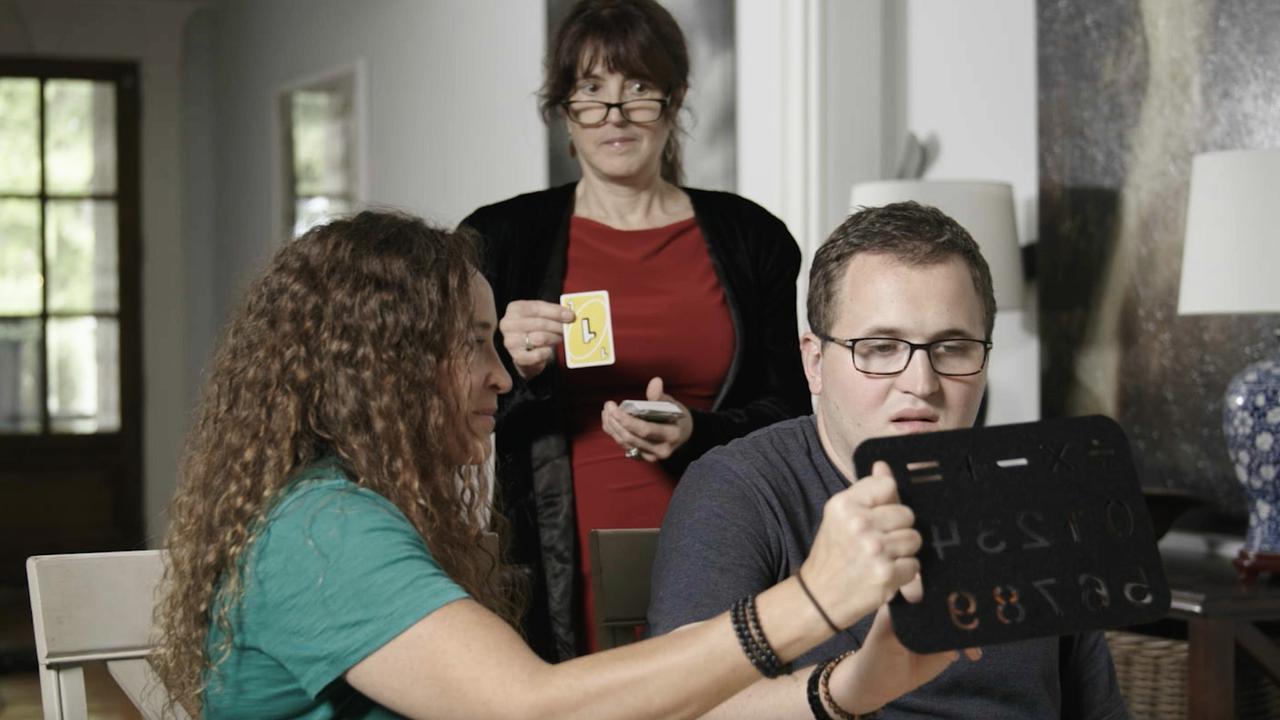Women He’s Undressed, Magic Mike XXL: Hollywood stripped bare
Women He’s Undressed, the documentary on costume designer Orry-Kelly, could change the way you see films.

There is a lot of startling new information in Gillian Armstrong’s Women He’s Undressed, for this viewer at least. The size and situation of Bette Davis’s breasts, for one. The fact Tony Curtis and Jack Lemmon disdained the Warner Bros wardrobe rack during the making of Billy Wilder’s classic Some Like It Hot and insisted their frocks be designed.
And, best to admit it up-front, the fact of Orry-Kelly at all. Until recently, I hadn’t heard of the once-feted Australian costume designer. I know this will see me banned from Kiama, his birthplace in 1897, if not the entire NSW south coast — but at least I’ll have company: Armstrong admits that when she first heard Orry-Kelly’s name “I had no idea who he was”.
She decided to do something about that, and this surprisingly clunky yet ultimately engrossing documentary is the result of seven years of sleuthing by the director and by the writer Katherine Thomson.
Let’s deal with the clunkiness first, as it’s best to accept its presence and not let it spoil the film. Armstrong uses modern actors to play Orry-Kelly (Darren Gilshenan from Top of the Lake) and his mother, Florence (Deborah Kennedy), and to narrate points in his life. She inexplicably puts Gilshenan in a red rowboat for most of the time, with its course (turning in circles, for example) marking the vicissitudes of Orry-Kelly’s life. Poor Flo fares even worse, telling her bits of the story while hanging out the washing. There are also far too many (that is, more than one) shots of the famous Kiama blowhole, doing duty as metaphor for heaven knows what.
It’s all a bit cringeworthy — but let’s move on because when Armstrong leaves the contemporary props behind and tells Orry-Kelly’s story, the result is an absorbing account of Hollywood in the 1930s and 40s, a world, to use the director’s apt words, “of fame, money, power and homophobia’’.
However, the headline gossip item comes a bit before that in the timeline, when Orry-Kelly first moved to the US and ended up sharing digs with a handsome young Englishman who wanted to act: Archibald Leach. Armstrong allows no doubt that Orry-Kelly and the future Cary Grant were lovers. Grant’s lifelong “act” (he married five times) and how that hurt the gay Orry-Kelly is a significant theme of the film, though perhaps not its most interesting one.
Whether Orry-Kelly, who died in 1964, has more to say about this a half-century later we will find out when his long-lost memoir is published next month.
More fascinating, though, is Orry-Kelly’s career, which coincided with the dawn of the talkies. He worked on some of the most famous films we have seen and won costume-design Oscars for An American in Paris (1951), Cole Porter’sLes Girls (1957) and Some Like it Hot (1959), for which he made not just Curtis and Lemmon’s drag but Marilyn Monroe’s barely-there dresses. “All his genius was on display,’’ Jane Fonda says of that film, before making a surprising declaration about MM’s decolletage.
Orry-Kelly was our most prolific Academy Award winner until Catherine Martin surpassed him by winning four Oscars for two films: Moulin Rouge! (costume design and art direction) and The Great Gatsby (costume design and production design). But consider some of the films Orry-Kelly worked on before costume design became an Oscar category in 1948 and it’s obvious he might have had a swagful: Casablanca, Dark Victory and Now, Voyager, to name just three.
Martin is one of several costume designers interviewed to speculate on Orry-Kelly’s life and work. The most valuable contribution comes from one who needs to speculate less because she was there, briefly: American Ann Roth, now 83, who was Orry-Kelly’s assistant on the 1955 musical Oklahoma! (Roth’s later credits include the late 60s-early 70s classics Midnight Cowboy and Klute).
Armstrong interviews surviving Hollywood players — such as Fonda, who worked with Orry-Kelly on a couple of his final films, and Angela Lansbury — as well as descendants of studio boss Jack Warner and the usual array of biographers and film writers. She makes terrific use of archival footage and film clips — what great movies they made back then! — though there is an odd decision to keep the real Orry-Kelly off stage until the final reel.
There are some wonderful fringe moments, such as a brief clip from The Private Lives of Elizabeth and Essex , which Orry-Kelly worked on, that reminds us a young swashbuckler from Hobart was also tearing up Hollywood at this time. Or a discussion of the tricks of the trade that turned tiny Natalie Wood into a reasonably voluptuous stripper in Gypsy (1962).
But Orry-Kelly’s greatest collaboration was with Davis, and the exploration of their relationship is fascinating. The closeness with which Orry-Kelly worked with the stars and the directors brings home the integrality of costume design in the overall production. As someone who hasn’t given much conscious thought to the matter until now, I can honestly say Women He’s Undressed has changed the way I see a film.
And while he was known for some spectacular designs, Orry-Kelly also knew when less was more. He said of the Mexican actor Dolores del Rio, a Hollywood star in the 20s and 30s, that she had “a back that doesn’t need dressing’’.
Not being dressed is the whole point of Magic Mike XXL, a sequel to the 2012 Steven Soderbergh hit Magic Mike, which followed the adventures of a troupe of male strippers and was loosely based on the late-teenage experiences of handsome star Channing Tatum. Soderbergh, who is in a hiatus from directing features, hands the reins to his assistant director Greg Jacobs, but is credited as cinematographer, editor and producer. You could make a Vladimir Putin joke here — call him president, call him PM, he runs the show — except the film is so bad it’s hard to credit it to such a talented movie-maker.
Magic Mike XXL is for women to see in large groups, to ogle the strippers’ rippling bodies, thrill to their dance moves and have a laugh. When it opened in the US on the July 4 weekend, women made up a remarkable 96 per cent of the audience. There’s nothing wrong with this — it’s harmless fun in a safe environment (and it will make lots of money, as its predecessor did) — but it’s reviewed here as a film and on that count it’s terrible.
While the original had a decent story arc — star stripper Magic Mike (Tatum) takes a young protege, The Kid, under his wing, slowly falls for his serious-minded sister and starts questioning his life choices — this is a series of barely connected scenes in which the dancers strip in various locations during a “last ride” road trip that echoes Entourage (“Did you bang her?” is a refrain). Gone is Matthew McConaughey, so good in the first film as the retired stripper turned impresario. Gone, too, are The Kid and his sister, which frees up Mike to join the endless dialogue about the need to “f..k this shit”. There’s an embarrassing detour to a wine night gathering of southern cougars, headed by Andie MacDowell.
Eventually we grind to a vulgar conclusion at a stripping convention in South Carolina, with Mike and his mates dry-humping anything that moves. I’ve heard it said that the Magic Mike films depict empowered women, because they are the ones throwing money at the objectified men. But in this version at least, at the end of the day it’s still the women who are bent over on stage while the men high-five each other.
Women He’s Undressed (PG)
3 stars
National release
Magic Mike XXL (MA15+)
1 star
National release



